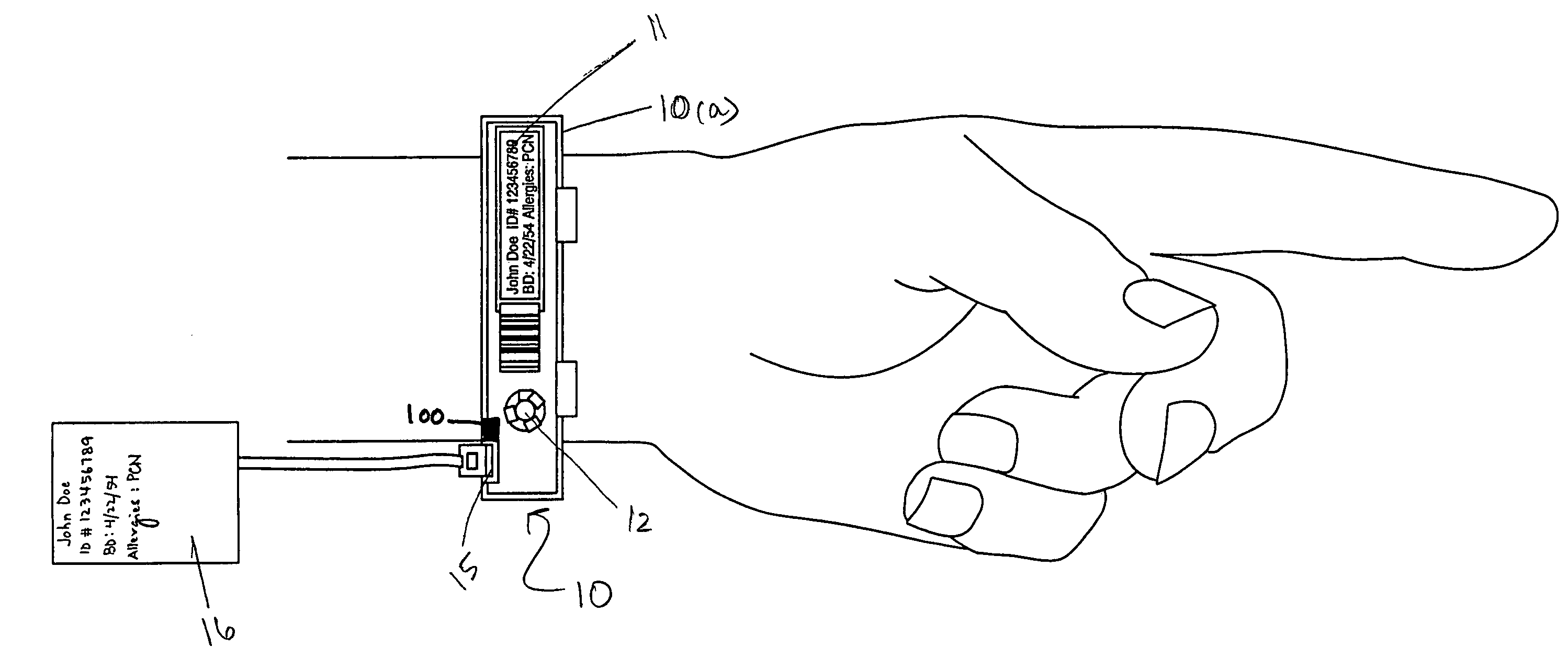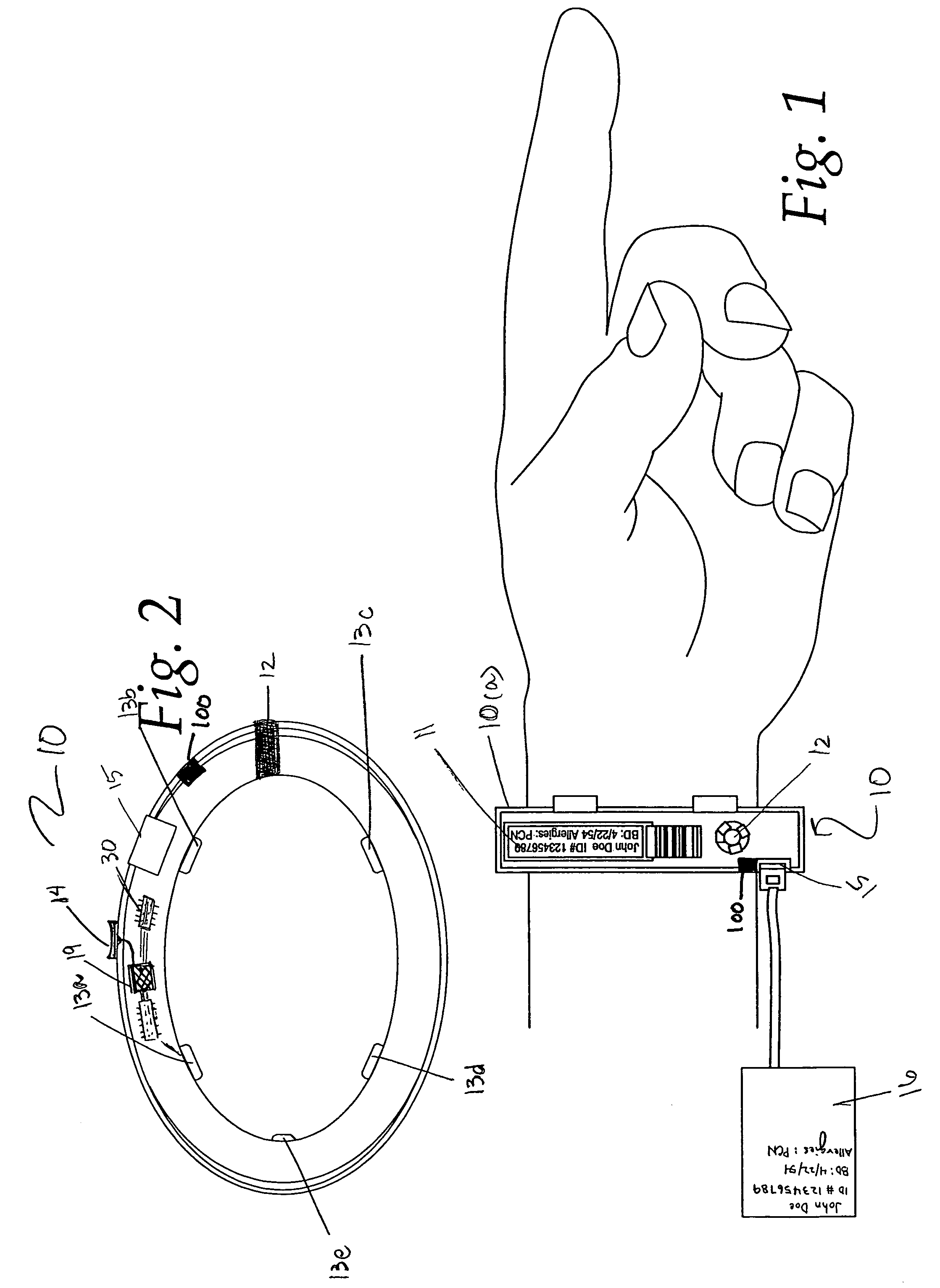Integrated patient diagnostic and identification system
a patient identification and integrated technology, applied in the field of patient identification devices, can solve the problems of inadvertent unhooking of sensory devices such as oxygen monitors, heart rate sensor wires, etc., and the existing sensory system exhibits several deficiencies
- Summary
- Abstract
- Description
- Claims
- Application Information
AI Technical Summary
Benefits of technology
Problems solved by technology
Method used
Image
Examples
Embodiment Construction
[0029]While various embodiments of the present invention are discussed in detail below, it should be appreciated that the present invention provides inventive concepts that can be embodied in a wide variety of specific contexts. The specific embodiments discussed are merely illustrative of specific ways to make and use the invention, and do not limit the scope of the invention.
[0030]Turning first to FIG. 1, there is generally shown a small, integrated diagnostic and identification bracelet 10 comprised of a substantially circular band 10a. In the preferred exemplary embodiment, the substantially circular band 10a comprises any hypoallergenic material which is reasonably resistant to cutting, breaking or tearing. The preferred exemplary embodiment comprises an ergonomically designed strong plastic bracelet 10 which is not only comfortable to wear but also prevents development of skin conditions such as, for example, pressure skin sores. This allows health care providers or others to ...
PUM
 Login to View More
Login to View More Abstract
Description
Claims
Application Information
 Login to View More
Login to View More - R&D
- Intellectual Property
- Life Sciences
- Materials
- Tech Scout
- Unparalleled Data Quality
- Higher Quality Content
- 60% Fewer Hallucinations
Browse by: Latest US Patents, China's latest patents, Technical Efficacy Thesaurus, Application Domain, Technology Topic, Popular Technical Reports.
© 2025 PatSnap. All rights reserved.Legal|Privacy policy|Modern Slavery Act Transparency Statement|Sitemap|About US| Contact US: help@patsnap.com



